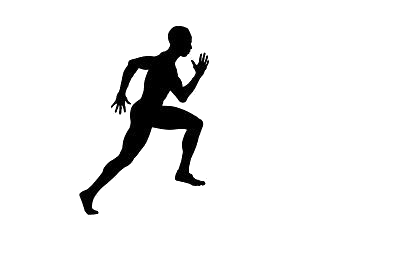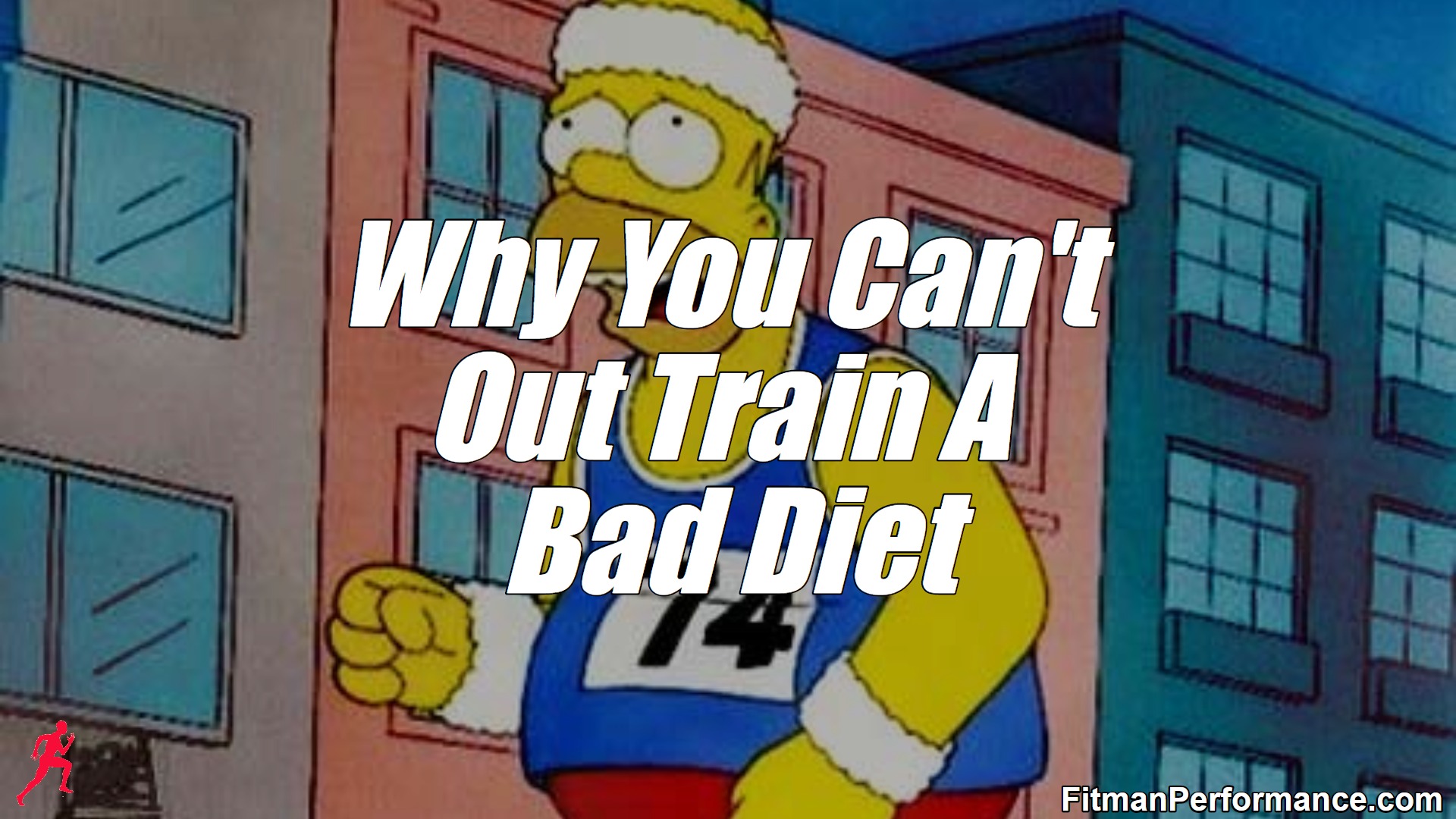To build your best body and have your top performances, you need the ideal combination of training, diet, and recovery.
Let’s say you train decently hard, get good sleep, and eat a “clean” diet.
But despite your efforts in the gym you looked in the mirror the other day and you were deeply frustrated. Your body is not anywhere close to where you believe it should be.
For all of your efforts you still are not getting the spectacular results that you were looking for.
Even though you are getting stronger and keeping your daily stress low you still appear as if you do not really train at all.
Being a lifter, but appearing as if you don’t lift is the ultimate kick in the sack.
If your training is on point, and you get quality sleep there can only be one viable reason to why you are stuck on your fitness journey: your diet is a total disaster.
Why You Can’t Out Train A Bad Diet
I’ve known many people who think they can out train a bad diet. They are dead wrong.
Many trainees who are making the change to living The Fit Life start by going to the gym.
Some lifters take it to the next level, ditch the lame “cardio” machines, and begin to train for real with barbells, dumbbells, and sprinting at the track.
These lifters begin to consistently workout 3 or 4 days a week. They start to separate themselves from the typical, run of the mill, go nowhere lifter in the iron game.
The lifters who are taking the game seriously have a solid program. They are getting significantly stronger, building more muscle, and increasing their athletic ability.
But even though Larry Lifter is making progress, he is not seeing the changes that he should see.
He has upped his commitment to traning but he has not made the proper changes to his diet. There are still loads of junk food in there.
Larry Lifter’s next step is typically a reduction in junk food and alcohol intake. Those are admirable steps in the right direction.
But those two moves alone are not enough by themselves to create your dream body.
Eating healthier and cleaner foods is a part of the puzzle, but there are two other parts that are equally important: your caloric intake and your macronutrient split.
Caloric Intake
When it comes to gaining muscle mass or losing body fat one of the most critical parts of the equation is your energy input vs. your energy output.
Caloric intake is such a powerful tool that you could actually lose scale weight if you were in a caloric deficit and ate bad food.
People have done it with Twinkies for iron’s sake! Your body will not look or feel good but you can actually lose weight with that nonsensical method.
A lifter or a trainee after real results will not walk down that road. The basic rules of caloric intake are:
• If Tonya Thick is carrying extra body fat, but wants to get leaner, she cannot consume more calories than she can burn. She has to be in a slight to moderate caloric deficit to lose the fat.
• If Sylvester Skinny wants to build more muscle mass he cannot burn more calories than he consumes. He has to be in a slight to moderate caloric surplus to build appreciable muscle.
A lifter cannot eat like Homer Simpson and expect to look like Apollo Creed. You also cannot eat like a hummingbird and expect to be an ostrich.
Even if your diet was full of clean, nutritious foods you would get stuck losing fat if your calories were too high.
3000 calories of clean food, while significantly healthier and better for your body and health, still counts as 3000 calories.
If that 3000 calories is more than how many calories you burn in a day, you will be unable to drop body fat and vice-versa for gaining muscle.
Macros
All foods fall into 3 categories: Carbohydrates, Proteins, and Fats.
Carbohydrates, like rice and potatoes, provide the fuel needed for high intensity exercise such as sprinting and lifting.
Protein, like beef and chicken, provide your body with the building blocks to build muscle and recover from training.
Fats, like coconut oil and olive oil, help your body absorb vital nutrients and are your bodies’ primary energy source for low intensity exercise like walking.
To build a great physique your macronutrient split has to be on point. A sample macro split looks like:
Total Calories: 2000
Carbohydrates: 200g (40 percent of the calories)
Protein: 150g (30 percent of the calories)
Fat: 67g (30 percent of the calories)
The breakdown for the macro split is below:
• For your carbs you would take 2000, multiply it by .4 and then divide that number by 4.
• Then for your protein you would take 2000, multiply it by .3 and then divide that number by 4.
• Finally for your fat you would take 2000, multiply it by .3 and then divide that number by 9.
1 gram of carbs or protein are worth 4 calories and 1 gram of fat is worth 9 calories.
This is a balanced macronutrient split.
Now based on the goals you have for yourself the split can be adjusted. But a 40/30/30 split is a good split for most lifters to start with.
Even if you are in a caloric deficit at 2000 calories a day, you still need balance with your macros in order to develop your best physique.
If you are eating 2000 calories a day and 80 percent of the intake is sugary carbohydrates then what do you think your end result physique will be?
I will tell you exactly what it will be: a soft and fluffy body. You might weigh less, but the scale does not determine success in the physique building game.
You will also make counting your macros and calories easier by investing in a food scale and measuring cups.
When you combine a great macro split, the right caloric intake, and healthy foods, you will be on the pathway to building a leaner and better body.
What About Macros For Bodybuilding?
For a bodybuilder, the correct macros play a major part in the dieting process.
You have to know how many calories you are eating and what the macro split is for your meals.
This information is what will allow you to get ripped and also retain your muscle mass while dieting.
I have seen the end results of the bodybuilder who has no macros vs. the bodybuilder who is hitting his macros with precision.
The no macros bodybuilder can look good if they are an absolute genetic freak or if they hide behind a smokescreen of anabolic steroids.
Outside of that they will typically appear smoother and not lean enough to compete with the bodybuilder who is hitting their macros.
If you are truly looking to develop a top-notch physique then you need to pay attention to both of these aspects. If not you will be taking up residence in the city of Frustration.
Now the 40/30/30 split we discussed earlier may not be the best option for you.
You may find that you do not tolerate carbs well and need to drop the percentage down to 30 percent.
You might find that you need more carbs to sustain your performance and bump the number up to 45 or 50 percent.
The bottom line is that these numbers are very individual to the lifter.
You will need to experiment to find the right combination that will allow you to reach your goals.
Note:
I recommend that lifters begin to track and record their macros until they have a better understanding of what and how much food they consume daily.
This will help you build better food consumption habits.
How To Factor In Cheat Meals
I don’t know of anyone who eats perfectly every day of every year.
There is nothing wrong with a cheat meal or snack as long as it does not badly derail you from your goal.
I have a formula that I have used for many years that will have you eating well but also allow for those treats.
The formula is simply called the good to bad ratio.
I have used it with success using either a 80/20, 85/15, or 90/10 split of good to bad meals throughout a week.
With these ratios you can build a great physique if you still play within the rules of caloric intake and macro splits. For example:
80/20 split: 24 out of 30 meals per week would be within the scope of a proper caloric intake, the correct macros, and healthy foods.
6 meals could be outside of the scope of a proper caloric intake, the correct macros, and healthy foods.
85/15 split: 25.5 out of 30 meals per week would be within the scope of a proper caloric intake, the correct macros, and healthy foods.
4.5 meals could be outside of the scope of a proper caloric intake, the correct macros, and healthy foods.
90/10 split: 27 out of 30 meals per week would be within the scope of a proper caloric intake, the correct macros, and healthy foods.
3 meals could be outside of the scope of a proper caloric intake, the correct macros, and healthy foods.
I’m typically a 90/10 guy or maybe an 85/15 guy. Some weeks I’m even a 95/5 guy.
When I was competing in natural bodybuilding my numbers would be closer to 100/0.
There is no room for error when you are trying to get beyond ripped for the stage. I counted my macros and calories every single day.
As of right now I do not count macros and calories every single day, because I eat similar foods daily. I know the numbers are always near the same.
If I decide to do a specific muscle building or fat loss phase, then I begin to count again.
It makes gaining muscle or losing fat much easier when you know what numbers you need to hit.
I share a pizza with my wife almost every Saturday. Sometimes I get dangerous and have a brownie or a chocolate chip cookie afterwards.
Having 4 slices of pizza and a brownie or cookie once during the week has absolutely no impact on my physique or performance.
I also may have that cheat meal after a tough training session to avoid the fat gain and feeling sluggish after eating it.
I prefer to not have junk meals on rest days unless the previous day was a hard workout. Eating in this fashion has become my standard way of eating.
Consuming a balanced, healthy diet with the proper caloric intake combined with hard exercise and recovery is the key to looking and feeling better.
People run into problems when their numbers are closer to 50/50 than 80/20.
You will not build the body you want if half of what you eat is junk. Like Frank Zane said, “junk food builds a junk body.”
Fake Hustle Talk
There is a lot of noise made on social media about a calorie being a calorie.
This is usually spewed by the fake natural bodybuilders.
They want to try to convince you that you can consistently eat a bad diet and still be ripped.
On anabolic steroids yes. If you are truly natural then not so much.
You also must realize that just because a food falls under a certain category does not mean that all macros are created equal.
Look at 40 grams of carbs in a sugary soda vs. 40 grams of carbs in a sweet potato.
Each will have a totally different effect on your physique. You still must make good choices when it comes to choosing foods.
When you are trying to get as lean as possible knowing your daily macros makes the whole journey that much easier.
Once you begin to eat in this fashion it becomes second nature. You will not need to count anything.
Combining hard training, a proper diet, and quality sleep is how you will build a lean and muscular physique that you can sport all year.
You can make adjustments along the way based on how you are progressing.
Now, you do not have to count your macros and calories forever.
But I recommend that you count them until you reach your goal. You will learn about the effects that different amounts and types of food have on your body.
Conclusion
Great macros and a proper caloric intake equals a great body. Bad macros and the wrong caloric intake equals a bad body.
You can’t out train a bad diet. It’s like paddling upstream without the cot dang paddle.
I’ll holla at you next time.
The People’s Trainer
Fitman



